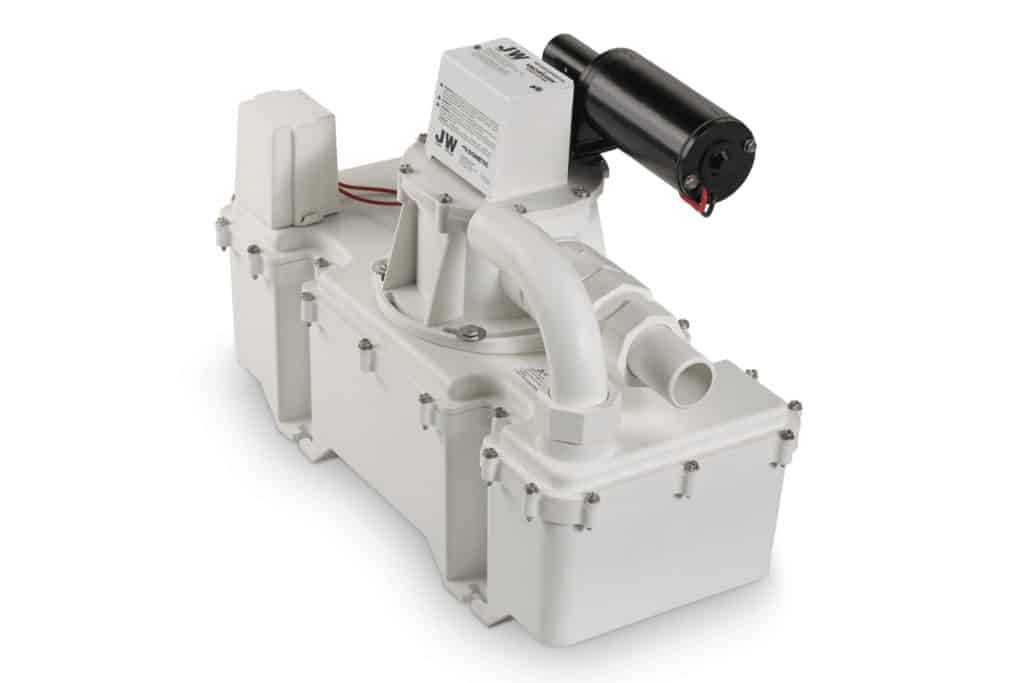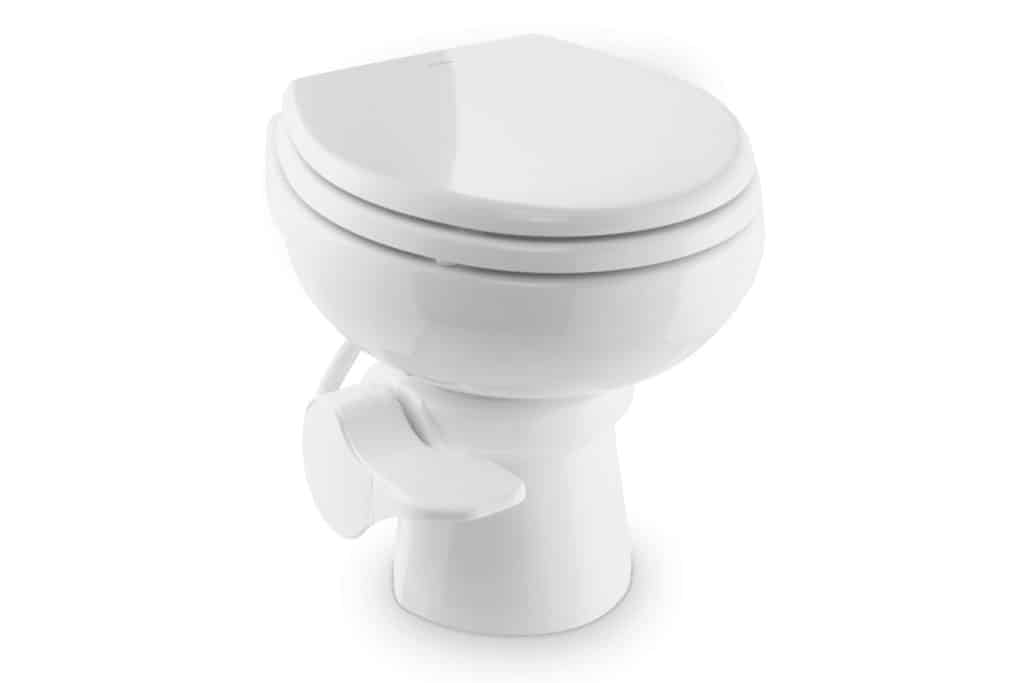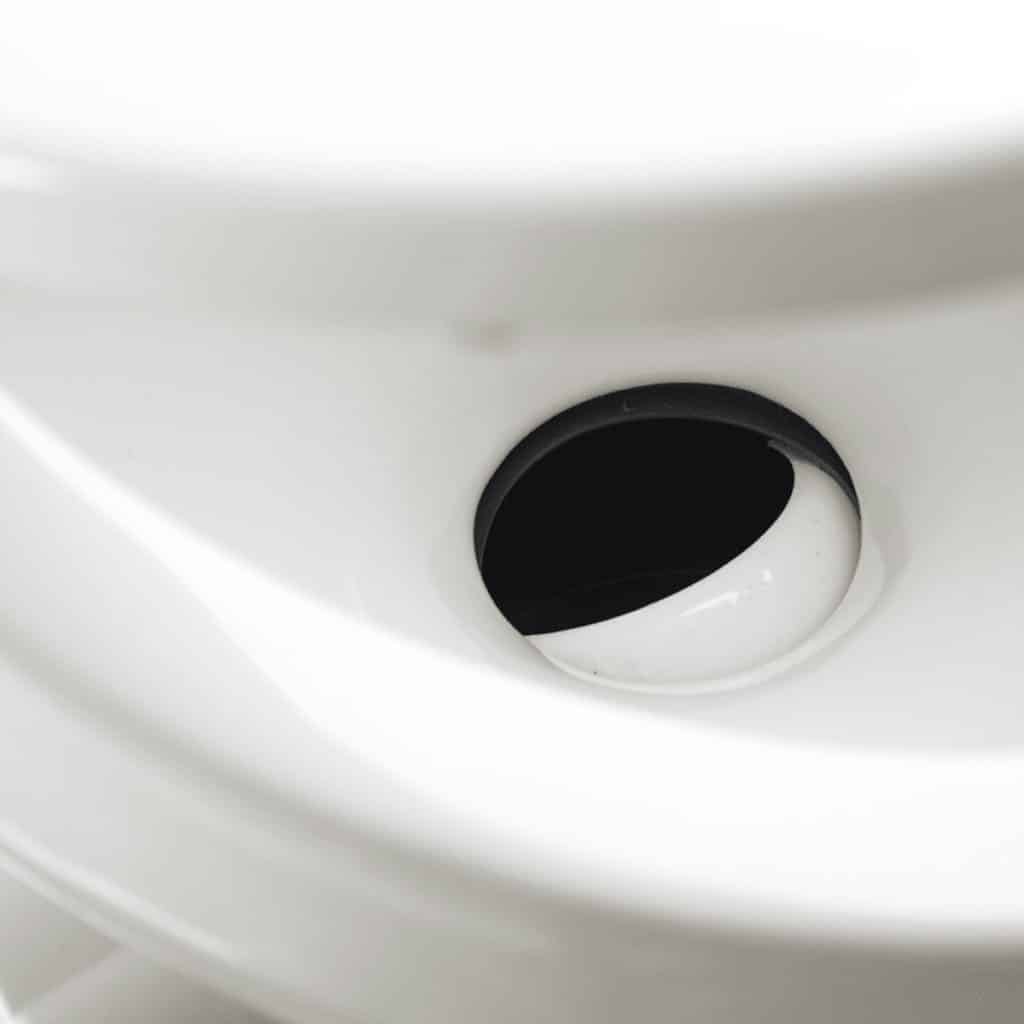
Vacuum-flushing toilets offer many advantages over other marine waste-management systems thanks to their efficiency, reliability and form factor, and Dometic’s line of VacuFlush systems in particular are found on a huge number of yachts. But, like anything aboard a boat, they’re liable to require a little TLC at some point. So, while vacuum-flush systems are unlikely to leave their owners ankle-deep in effluent, at the risk of disappointing a group of growingly antsy crewmembers it’s worth having expedient troubleshooting plans prepared just in case.
How Marine Vacuum Toilet Systems Work
Before getting down to business, it helps to have an understanding of how vacuum flushing works. Note: Dometic offers a wide variety of designs and diagrams for them, and these are available on its website, but they all function in much the same way. There are four main components: a toilet, a vacuum pump, an accumulation chamber and a holding tank.

The toilet is the user’s main interface with the system. There are pedal- and button-operated systems, sometimes with a separate status panel to indicate vacuum pressure and remaining holding-tank capacity. On one end, there’s a supply hose that fills the bowl from the freshwater system. On the other end, there’s a ball valve between the bowl and the inlet pipe leading to the accumulation chamber or vacuum generator (the latter refers to an all-in-one accumulation chamber and vacuum pump). Between uses, the vacuum pump builds negative pressure in the accumulation chamber so that black water can be sucked down when the toilet is flushed. After the ball valve is closed, the pump pushes the black water out of the accumulation chamber, through the outlet pipe, and into the holding tank where it can then be pumped out.
Bad Odors
Foul odors are a good indicator that something needs attention, but the toilet system shouldn’t always be the first suspect. Other culprits include showers and sink traps, refrigerator or AC condensate drains, stagnant bilge water and even fuel leaks. The first step to identifying the origin of the malodor is to re-sensitize your nose by getting some fresh air above deck. If there’s a septic smell outside the cabin, then the vent filter (or lack thereof) is probably to blame. If the scent is localized to the head compartment and the traps have been ruled out, then it’s time to check the toilet system for leaks, especially if the smell gets stronger when the toilet is flushed. It’s also worth noting that sometimes saltwater systems will develop an eggy (sulfur) smell despite being in good working order.

Permeated Hoses and Leaky Fittings
Vacuum-flushing systems have a lot of pipes and fittings and, without visible drips, leaks and permeated hoses can be difficult to identify. The best method is to grab a clean rag or paper towel (and maybe a pair of gloves) and wipe down each pipe, fitting, and hose individually while checking for any discoloration or foul smells. Using a new rag or cloth for each component will help cut down on any misidentifications.
Permeated hoses need to be replaced but it’s advisable to do a full overhaul of gaskets and other hoses. Leaky fittings can be replaced as well but, it’s also worth checking their gaskets and whether or not they’re properly tightened down.
Flushing Frustrations
It’s common knowledge among boat owners that when there’s a flushing failure you don’t just reach for a plunger as you might do at home. To borrow a trope from the IT world, the first step is to make sure the system is turned on — that means checking the breaker panel. If the system is fitted with them, the next thing to check is the indicator panel for the holding tank and/or accumulation chamber. The toilet will not flush if the holding tank is full and fixing that will require a pump out. If the holding tank is not full, but the vacuum status panel shows that the unit is not ready to be flushed, that can indicate a problem with the pump or accumulation chamber. If the pump is audibly running but the system still isn’t flushing, it may indicate a vacuum leak or a problem with the pressure switch.
Clogs
Most cases where the system is functional, but not flushing involve a clog. And in general, clogs caused by foreign items have to be pulled out and discarded elsewhere. Before going to remove the clog, shut off the freshwater pump to prevent water from entering and overflowing the bowl. It’s a good idea to have a trash receptacle close at hand and a pair of rubber gloves. Once the water is turned off, depress the foot pedal to open the ball valve, then reach in and remove the offending item — don’t try to flush it back down the toilet.
Water Not Staying in Bowl
When freshwater isn’t staying in the bowl, check for loose clamps on the freshwater supply hose and tighten or replace them as needed. Then look to see if the ball valves are closing properly. If not, try cleaning them and removing any obstructions. If any wear is visible, they should be replaced. A stuck valve can sometimes be remedied by slightly loosening the screws holding it in place or by lubricating it.
When it comes to vacuum-flush systems on boats, an ounce of prevention is worth an hour of mopping up black water. The easiest way to do that is through regularly flushing the toilet, annual maintenance and proper winterization. For replacement parts as well as comprehensive guides to troubleshooting and maintenance of VacuFlush models in specific, check out Dometic’s website.









